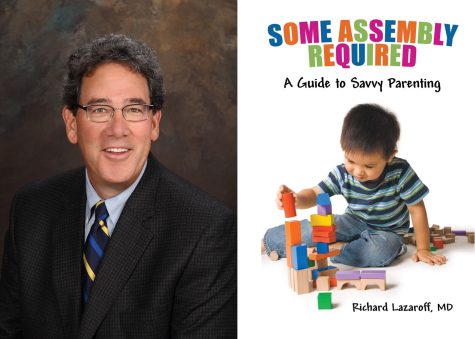Set rules, stay connected as your child navigates social media
Published May 4, 2022
The number of hours we all spend using social media is creeping upward, and the pandemic has accentuated this trend. Managing how best to address this with children and adolescents in the home is a complex but necessary task for parents.
It is easiest with very young children. Under age 18 months: No screen time except for video chatting with a relative. Kids under 5 should spend no more than an hour, with that hour consisting of high-quality programming with a parent present to assist in understanding what they are watching and how it relates to the world around them.
For children over the age of 6, parents need to place consistent limits on time spent using media, on the types of media, and on making sure that media use does not interfere with getting adequate sleep and physical activity.
ADVERTISEMENT
With an adolescent, our antennae are properly up about safety. It becomes both a matter of time spent but, more importantly, where on the internet and with whom are they spending it.
With every passing year, I find it more difficult to discern where “life” is taking place. Face-to-face social interaction is disappearing and being replaced with contact over social media with its inherent risk for misunderstandings and delaying social skill development.
Surveys suggest the average amount of screen time spent by children is an astonishing six to nine hours a day, with most of it out of our sight. It is impractical to assume a parent can always be present; therefore, we must establish rules in advance for more positive than negative impact to occur.
Positive impact?
ADVERTISEMENT
We often forget that not all a child’s time spent using social media is a waste. It is part of the current way this age group stays in touch. Some kids are really busy, perhaps even too busy, and the use of social media allows them to stay connected.
But you are not remiss to remind them to manage their safety and reputation (some shared information is out there forever) and encourage them to balance the time spent on these relationships over social media with face-to-face contact. What are generally thought of as adult skills, such as managing conflict, resolving problems and expressing emotions, are unlikely to develop fully with only internet time as a training ground. And though the negative effects of social media are at times sensationalized, I do believe it is one of the greatest contributors to stress and poor mental health among the young today.
Like most challenges in savvy parenting, consider all the issues, then act intentionally.
1. Turn off cell phones at the dinner table, while doing homework and after going to bed. Know what apps are on your child’s phone and computer and learn how to use privacy settings and restrictions available to block inappropriate content. Also consider having them turn the location services off for some apps to protect their safety. Let’s not be naive about these suggestions as most children and adolescents have computer skills superior to the average parent and can circumvent most of our efforts if they choose to do so.
2. Talk to your children about how you handle media interruptions in your life and while at work. You cannot expect them to be sitting together with friends and not all be staring down at their cell phones instead of talking, if this is what you model in your personal life. Explain that multitasking while working or studying usually results in errors and additional time to complete the task at hand.
3. Remind children in middle school and adolescents to think about what they have written before hitting the send button. Tell them that a 10-minute rule is not a bad idea if the communication could be misconstrued, is inappropriate, offensive or in violation of their school’s student conduct policies.
4. Monitor your child’s social media profile if they make it available. I would prefer parents not read a child’s diary — the word itself suggests this is private territory — but don’t be naive. If they have put their private information out there in the social media world, monitor it. Some parents actually set up their child’s cellphone password and social media accounts themselves to be certain of having access to this information.
And do not lie about their age when doing so, as the most popular social apps have default settings that are age appropriate. Such settings can be set, as can opt out or opt in settings when appropriate.
New products continue to become available to filter content, monitor web browsing and restrict the use of devices to specific time periods. If your child knows these are the rules going in, then there should be no grounds for complaining. Some families take this one step further and write a formal contract to make sure everyone is on the same page.
5. Encourage your child to take time off. In my day, kids could come home from school and have down time. Now, they are expected to “brand” themselves 24/7 with no safe space from the social rigors of school life. The resulting anxiety and, at times, depression, can become real medical problems even contributing, at the extreme, to increased rates of suicide and suicidal thinking. Kids need time off the grid to decompress.
6. Help your child feel good about themselves. FOMO (fear of missing out) and not enough likes to posted photos can be a real problem. In my pediatric practice, some kids used to describe themselves as feeling invisible. Not only are kids branding themselves on social media, but others are often intentionally (in the form of cyberbullying) or unintentionally (by not “liking” them) branding them as well. Parents must teach their children to define themselves, not to be defined by others.
7. Have your child introduce their “friends” and contacts on the internet to you. If you have not met the family of a child who is occupying a lot of your child’s social time, do so ASAP.
Don’t be lazy or intimidated about social media. Get informed and make it work in your household for both you and your child.
Richard Lazaroff is a retired pediatrician who practiced in St. Louis County for nearly 40 years. Married for 42 years, he is the father of two and grandfather of four and the author of “Some Assembly Required, A Guide to Savvy Parenting.”

















